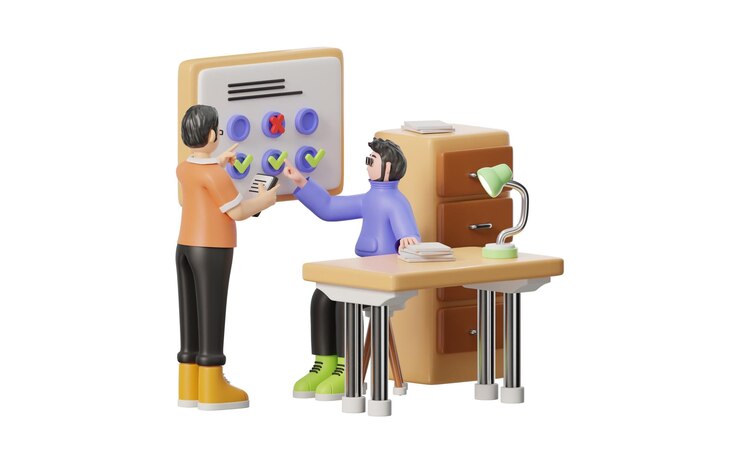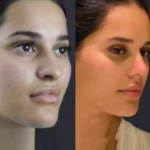In today’s fast-paced digital world, businesses constantly seek innovative ways to showcase their products. Among these methods, 3D animation has emerged as a powerful tool for product demonstrations. It captivates audiences and provides a comprehensive understanding of a product’s features and benefits. This blog explores the significance of 3D animation in product demonstrations, the process involved, and tips for choosing the right animation studio in Atlanta for your needs.
Why Choose 3D Animation for Product Demonstrations?
1. Enhanced Visualization
One of the primary advantages of 3D animation is its ability to offer detailed and immersive visualization. Traditional 2D images and videos often fail to convey intricate details, especially for complex products. With 3D animation services, viewers can see a product from multiple angles, zoom in on specific features, and observe how it operates in a simulated environment. This enhanced visualization aids in understanding the product better, which can lead to higher conversion rates.
2. Increased Engagement
Incorporating 3D animations into product demonstrations significantly boosts audience engagement. The dynamic movement, vibrant colors, and detailed representations capture viewers’ attention and hold it longer than static images or text. Engaging animations can evoke emotions and interest, making potential customers more likely to consider your product seriously.
3. Cost-Effective Marketing
Creating physical prototypes for product demonstrations can be expensive and time-consuming. 3D animation eliminates the need for prototypes, allowing companies to save both time and money. Additionally, once a 3D model is created, it can be easily modified or adapted for various marketing campaigns, further reducing costs over time.
4. Versatility
3D animations can be used across multiple platforms and for various marketing purposes. Whether you need a product demo for your website, social media, trade shows, or presentations, 3D animations can be tailored to fit each platform’s requirements. This versatility ensures that your product reaches a broader audience in a compelling format.
5. Improved Clarity
3D animations provide a clear representation of how a product works. Complex features or functionalities can be explained visually, reducing the risk of misinterpretation. For example, technical products, like machinery or electronics, benefit significantly from 3D animations that demonstrate their operation, making it easier for potential customers to understand the value of the product.
The Process of Creating 3D Product Demonstrations
Creating a captivating 3D product demonstration involves several key steps:
1. Concept Development
The first step in the process is to develop a clear concept for the animation. This involves brainstorming ideas, identifying key product features to highlight, and determining the overall message you want to convey. Collaboration with your animation team is essential during this phase, as their expertise can help refine the concept and ensure it aligns with your marketing goals.
2. Storyboarding
Once the concept is established, the next step is to create a storyboard. A storyboard is a visual representation of how the animation will unfold, scene by scene. It includes sketches or images and annotations that outline the animation’s flow, key transitions, and camera angles. Storyboarding helps in visualizing the final product and serves as a guide for the animators during production.
3. Modeling
After finalizing the storyboard, the 3D model of the product is created. This step involves using specialized software to build a digital representation of the product, incorporating all its intricate details. The modeling process requires skilled 3D artists who can accurately replicate the product’s shape, texture, and materials.
4. Texturing and Lighting
Once the 3D model is complete, texturing and lighting come into play. Texturing involves adding colors, patterns, and surface details to the model to make it look realistic. Lighting is equally important, as it creates depth and highlights the product’s features. Proper lighting techniques can enhance the visual appeal and ensure that the product stands out in the animation.
5. Animation
With the model textured and lit, the animation process begins. This step involves defining the movements and actions the product will showcase. Animators use keyframe techniques to create smooth transitions and lifelike motions. The animation should effectively demonstrate how the product works, emphasizing its features and benefits.
6. Rendering
After the animation is complete, the final step is rendering. Rendering converts the 3D model and animation into a video format, producing the final product demonstration. This process can be time-consuming, as it involves calculating how each frame will look based on lighting, textures, and camera angles.
7. Review and Revisions
Once the rendering is complete, it’s essential to review the animation for any discrepancies or areas for improvement. Collaborate with your animation team to provide feedback, and be open to making revisions. This step ensures that the final product aligns with your vision and marketing objectives.
8. Delivery
After final approval, the completed 3D product demonstration is delivered in the required formats for your marketing needs. Your animation studio in Atlanta can provide various output options suitable for web, social media, or presentations.
Tips for Choosing the Right Animation Studio in Atlanta
Selecting the right animation studio is crucial for the success of your 3D product demonstration. Here are some tips to help you make the right choice:
1. Review Portfolios
When evaluating animation studios, review their portfolios to assess the quality and style of their work. Look for projects that align with your vision and industry. A strong portfolio demonstrates the studio’s creativity and technical expertise, which are essential for creating compelling animations.
2. Check Client Testimonials
Client testimonials and reviews provide valuable insights into the studio’s reputation and reliability. Look for feedback on their communication, professionalism, and ability to meet deadlines. Positive testimonials indicate a studio that prioritizes client satisfaction and delivers high-quality work.
3. Assess Technical Expertise
3D animation requires specialized skills and knowledge. Ensure the studio you choose has a team of experienced animators proficient in the latest software and techniques. Inquire about their technical capabilities and familiarity with your industry to gauge their expertise.
4. Discuss Collaboration
Effective collaboration is vital for a successful project. Choose a studio that encourages open communication and values your input throughout the process. A collaborative approach ensures that your vision is understood and incorporated into the final animation.
5. Evaluate Turnaround Time
Time is often a crucial factor in marketing campaigns. Inquire about the studio’s turnaround time for projects and their ability to meet deadlines. A reliable studio should be able to provide an estimated timeline and keep you informed of any changes during the production process.
6. Request a Quote
Before making a final decision, request a quote from the animation studios you are considering. Compare pricing and services offered to find a studio that fits your budget without compromising quality. Remember, the cheapest option may not always provide the best results, so prioritize quality alongside cost.
7. Explore Additional Services
Some animation studios offer additional services such as scriptwriting, voice-over, and post-production editing. Opting for a studio that provides these services can streamline the process and ensure a cohesive final product.
Best Practices for Using 3D Animation in Product Demonstrations
Once you have your 3D product demonstration ready, consider the following best practices for maximizing its effectiveness:
1. Keep It Concise
Attention spans are short, so ensure your animation is concise and to the point. Aim for a duration of 1-2 minutes, focusing on key features and benefits. This brevity will keep viewers engaged and encourage them to learn more about your product.
2. Focus on Key Features
Highlight the product’s unique selling points and key features that differentiate it from competitors. Avoid overwhelming viewers with too much information. Instead, focus on the most critical aspects that will resonate with your target audience.
3. Use Clear Messaging
Accompany your animation with clear and concise messaging. Use simple language that resonates with your audience, and avoid jargon unless necessary. Captions or voiceovers can reinforce key points and enhance understanding.
4. Optimize for Different Platforms
Ensure your 3D animation is optimized for various platforms where it will be shared. Consider different formats and resolutions for social media, websites, and presentations. Tailoring the animation to fit each platform will maximize its reach and impact.
5. Track Performance
After launching your product demonstration, track its performance using analytics tools. Monitor metrics such as views, engagement, and conversion rates to assess the effectiveness of the animation. Use this data to make informed decisions for future marketing strategies.
Conclusion
3D animation for product demonstrations is a powerful tool that can significantly enhance your marketing efforts. Its ability to provide detailed visualization, engage audiences, and convey complex information clearly makes it an invaluable asset for businesses across various industries. By following the outlined process and tips for choosing the right animation studio in Atlanta, you can create compelling product demonstrations that resonate with your audience and drive sales.
In an increasingly competitive market, investing in 3D animation services can set your brand apart and elevate your marketing strategy to new heights. Embrace the power of 3D animation, and watch your product demonstrations captivate and convert your audience like never before!



